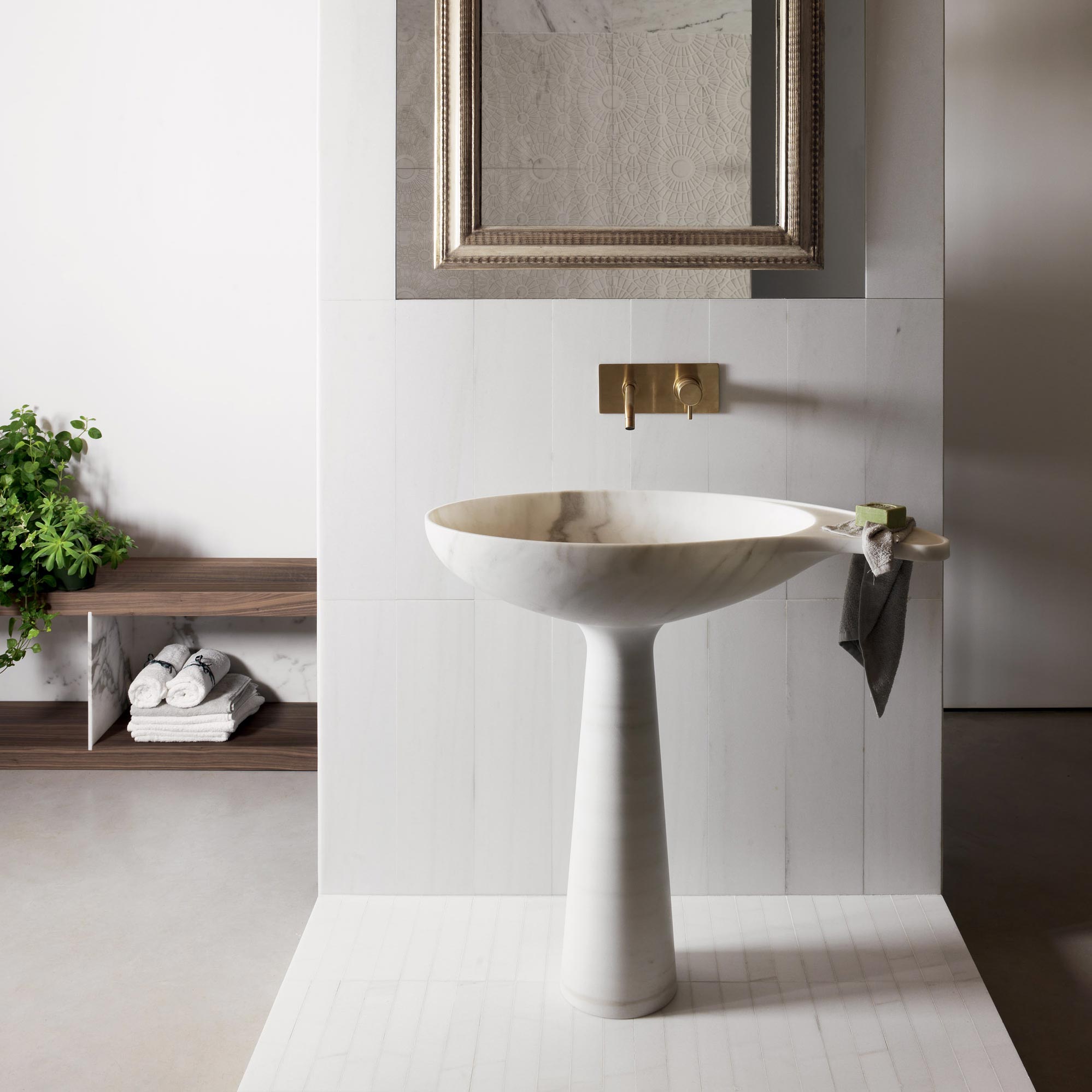Considerations for Choosing a Freestanding Bathroom Sink

When selecting a freestanding bathroom sink, several key factors should be taken into consideration to ensure the best fit for your bathroom space and needs.
Size and Shape
The size and shape of the sink should complement the dimensions and layout of the bathroom. Measure the available space and determine the maximum size that can be accommodated. Consider the shape that best suits the overall aesthetic, whether it be rectangular, oval, round, or an unconventional form.
Material
Freestanding bathroom sinks are available in a variety of materials, including ceramic, stone, glass, and metal. Each material offers unique characteristics in terms of durability, ease of maintenance, and visual appeal. Choose a material that complements the bathroom décor and can withstand regular use.
Functionality
Consider the functionality of the sink and how it will be used. Determine the number of basins needed, the depth of the sink, and the presence of additional features such as overflow drains or built-in soap dispensers. Ensure the sink meets your practical requirements.
Ease of Maintenance
Regular cleaning and maintenance are essential for maintaining the appearance and longevity of the sink. Choose a material that is easy to clean and does not require excessive maintenance. Consider the frequency of use and the type of cleaning products that will be used.
Installation and Maintenance of Freestanding Bathroom Sinks: Free Standing Bathroom Sink

Free standing bathroom sink – Installing and maintaining a freestanding bathroom sink requires careful planning and execution. This guide will provide step-by-step instructions and essential maintenance tips to ensure a successful installation and longevity for your sink.
Before embarking on the installation process, gather the necessary tools and materials, including a level, tape measure, adjustable wrench, basin wrench, plumber’s putty, and a flexible drain hose.
Installation, Free standing bathroom sink
Begin by determining the desired location for the sink and marking the position on the floor. Use a level to ensure the floor is level and the sink will be stable. Next, connect the drain hose to the sink’s drainpipe and secure it with a hose clamp. Apply a bead of plumber’s putty around the base of the sink and gently place it on the marked location.
Once the sink is in place, connect the water supply lines to the sink’s faucet using an adjustable wrench. Ensure the connections are tight but not overtightened. Finally, turn on the water supply and check for any leaks. If leaks occur, tighten the connections as needed.
Maintenance
Freestanding bathroom sinks come in various materials, each with its own maintenance requirements. For ceramic sinks, use a mild detergent and soft cloth to clean the surface. Avoid abrasive cleaners or sponges that can scratch the finish. For stone sinks, such as marble or granite, use a stone cleaner specifically designed for the material. Follow the manufacturer’s instructions carefully to prevent damage.
To maintain the shine of a metallic sink, use a metal cleaner appropriate for the type of metal. For copper sinks, a vinegar and salt solution can be used to remove tarnish. For stainless steel sinks, use a stainless steel cleaner to prevent rust and maintain its luster.
Regular cleaning and maintenance will ensure the longevity and beauty of your freestanding bathroom sink. By following these guidelines, you can enjoy a functional and aesthetically pleasing bathroom for years to come.